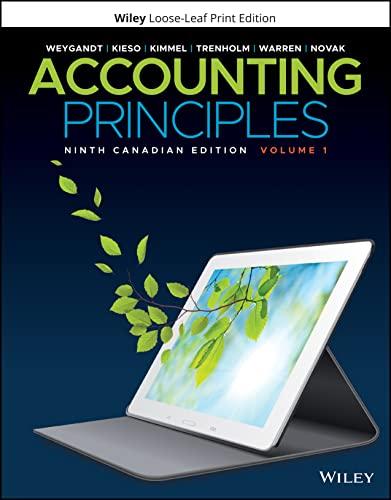Question
8-36. Analyzing evidence requires a. analytic strategy b. existence of fee constraint 8-37. Which of the following reasons best describes the requirement to comply with
8-36. Analyzing evidence requires
a. analytic strategy
b. existence of fee constraint
8-37. Which of the following reasons best describes the requirement to comply with AICPA standards?
a. It can withstand scrutiny
b. It applies to all forensic accountants
8-38. Each of the following is an example of quantitative data except:
a. Net income for the period ended 12/31/2013
b. Number of home sales this year in Columbus, Ohio
c. The ages of students in your forensic accounting class
d. The color of the walls in your classroom
e. The speed with which a repetitive task is completed
8-39. When evaluating sufficiency of data, it is important to consider the following factors, except for:
a. Availability of data
b. Professional judgment
c. Standard of proof
d. Scope of engagement
8-40. The process of taking a set of information and breaking it down into manageable pieces is known as:
a. Data transmutation
b. Parsing the data
c. Data analysis
d. Data manipulation
8-41. Without sufficient facts or data, the application of reliable principles and methods is of little or no value.
a. True
b. False
8-42. The threshold of data sufficiency is related to each of the following except:
a. The standard of proof
b. The nature of an engagement
c. The availability of data
d. All of the above are related to the sufficiency of data
8-43. An instrument that creates leverage in processing, understanding, and/or illustrating data is called a:
a. Technique
b. Method
c. Tool
d. Process
8-44. A _____ determines what data are processed and how they are processed:
a. Technique
b. Method
c. Tool
d. Process
8-45. A particular approach for applying a tool or method in a specific situation is called a:
a. Technique
b. Method
c. Tool
d. Process
46. Each of the following can create an operating constraint that might impact the data analysis task except:
a. Technological resources
b. Time needed to complete the analysis
c. Data access
d. All of the above are potential constraints
8-47. Which of the following is not a data limitation?
a. Altered data
b. Coexistent data
c. Different forms of the same data
d. Missing data
8-48. Which of the following types of data are obtained directly from the subject individual or entity?
a. First-party data
b. Second-party data
c. Third-party data
d. Fourth-party data
8-49. Which of the following is an example of second-party data?
a. A conversation with a subject
b. An article in the local newspaper
c. A financial statement prepared by the subjects CPA firm
d. A legal document found on LexisNexis
8-50. The reliability of a tax return is enhanced for data analysis purposes because:
a. It is submitted to the government under penalty of perjury.
b. It is prepared by a professional tax preparer.
c. It is a subject taught in college.
d. None of the above is correct.
8-51. A forensic accountant should request data without consideration of its cost.
a. True
b. False
8-52. When planning for data analysis, each of the following is a consideration except:
a. How results will contribute to refining the working hypothesis
b. How the data will be analyzed
c. How the data are viewed by senior management
d. What data will be collected
8-53. The following are methods employed by forensic accountants to analyze data, except for:
a. descriptive statistics used to evaluate and describe the distribution of a data set
b. digital analysis to examine digital frequencies in qualitative data
8-54. Benefits of a written data analysis plan include which of the following?
a. It provides a standard against which to monitor progress.
b. It helps a forensic accountant remain on task.
c. It forces a forensic accountant to consider data constraints.
d. All of the above are benefits of a written data analysis plan.
8-55. A client lost most of his paperwork in a fire at his warehouse. What type of constraints do you face?
a. Lack of time
b. Lack of access to data
c. Lack of technological resources
d. Lack of adequate finances
Step by Step Solution
There are 3 Steps involved in it
Step: 1

Get Instant Access to Expert-Tailored Solutions
See step-by-step solutions with expert insights and AI powered tools for academic success
Step: 2

Step: 3

Ace Your Homework with AI
Get the answers you need in no time with our AI-driven, step-by-step assistance
Get Started


